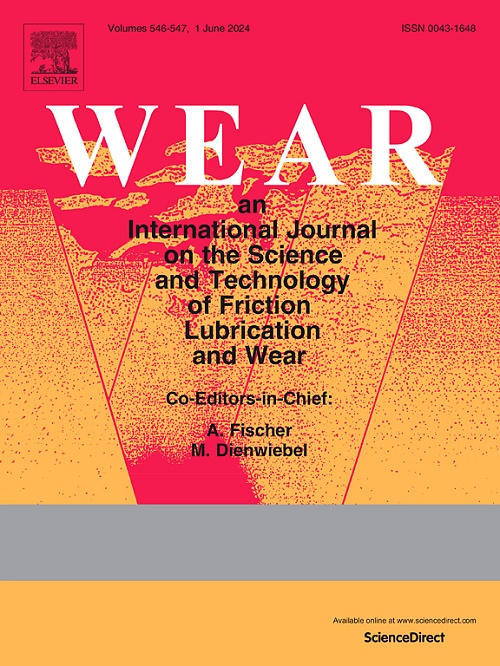Wear behavior of coated cermet/carbide tools during high-speed turning of 18CrNiMo7-6 steel and its associated surface integrity evaluations
IF 5.3
1区 工程技术
Q1 ENGINEERING, MECHANICAL
引用次数: 0
Abstract
The wear behavior and surface integrity of carbide tools during high-speed machining have been widely investigated; however, those of cermet tools have not been investigated in depth. Therefore, this study compares the tool life and wear behavior of cermet and carbide tools during high-speed turning of 18CrNiMo7-6 steel and compares the surface integrity of the workpieces acquired under different wear states. Results show that the tool life of the cermet tools improved by up to 5.6 times compared to the carbide tools. Additionally, as the cutting speed (v) increases, the tool life of the cermet tools increases by 83 %, whereas that of the carbide tools decreases by 58.3 %. The primary wear mode of the cermet tools was oxidative wear for v = 100 and 160 m/min, whereas that of the carbide tools was coating peeling. However, at v = 220 m/min, both tools exhibited coating peeling and notch wear. Moreover, surface roughness, surface microhardness, and residual compressive stress increased with the progression of tool wear. These findings reveal that cermet tools are more suitable for high-speed turning and are superior to carbide tools in tool life and machined surface integrity, thereby ensuring high-quality machining and improved machining efficiency.
18CrNiMo7-6钢高速车削时涂层陶瓷/硬质合金刀具的磨损行为及其表面完整性评价
硬质合金刀具在高速加工过程中的磨损行为和表面完整性得到了广泛的研究;然而,对陶瓷工具的研究还不够深入。因此,本研究比较了金属陶瓷和硬质合金刀具在高速车削18CrNiMo7-6钢时的刀具寿命和磨损行为,并比较了不同磨损状态下获得的工件表面完整性。结果表明,金属陶瓷刀具的寿命比硬质合金刀具提高了5.6倍。此外,随着切削速度(v)的增加,金属陶瓷刀具的刀具寿命增加了83%,而硬质合金刀具的刀具寿命减少了58.3%。金属陶瓷刀具的主要磨损方式为v = 100和160 m/min的氧化磨损,而硬质合金刀具的主要磨损方式为涂层剥落。然而,在v = 220 m/min时,两种工具都表现出涂层剥落和缺口磨损。表面粗糙度、表面显微硬度和残余压应力随刀具磨损程度的增加而增加。结果表明,金属陶瓷刀具更适合高速车削,刀具寿命和加工表面完整性优于硬质合金刀具,从而保证了高质量的加工,提高了加工效率。
本文章由计算机程序翻译,如有差异,请以英文原文为准。
求助全文
约1分钟内获得全文
求助全文
来源期刊

Wear
工程技术-材料科学:综合
CiteScore
8.80
自引率
8.00%
发文量
280
审稿时长
47 days
期刊介绍:
Wear journal is dedicated to the advancement of basic and applied knowledge concerning the nature of wear of materials. Broadly, topics of interest range from development of fundamental understanding of the mechanisms of wear to innovative solutions to practical engineering problems. Authors of experimental studies are expected to comment on the repeatability of the data, and whenever possible, conduct multiple measurements under similar testing conditions. Further, Wear embraces the highest standards of professional ethics, and the detection of matching content, either in written or graphical form, from other publications by the current authors or by others, may result in rejection.
 求助内容:
求助内容: 应助结果提醒方式:
应助结果提醒方式:


